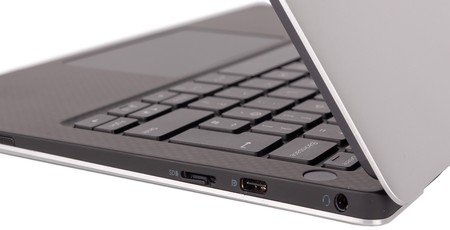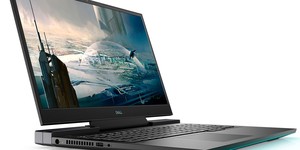Manufacturer: Dell
UK price (as reviewed): £1,549.00 (inc. VAT)
US price (as reviewed): $1,999.99 (exc. tax)
While differing wants and needs mean there is no single ultimate laptop, those in the premium Ultrabook category tend to be revered as the best for workloads that exclude gaming or workstation-style tasks. After all, the promise of such machines is a thin, light, and sleek chassis, nippy performance in everyday and mildly demanding tasks, and decent connectivity and battery life – who could argue with that? On that note, Dell’s XPS range has long been popular, and the latest version of the XPS 13, the 9370, landed on our desks recently and was received with noises of admiration from onlookers. It is, after all, beautiful, but it will need to prove that this runs more than skin-deep if it’s to justify its £1,550 price tag.

First, though: dat chassis. Beauty is of course in the eye of the beholder, but we’d wager few would disagree with our assessment of the XPS 13’s unibody, CNC-machined aluminium shell as being gorgeous. Our flash photography isn’t overly flattering to the reflective silver finish, but it contrasts beautifully with the carbon fibre pattern of the palm rest area. Build quality is near enough perfect, too, with no overly spongy areas to speak of but rather a consistent rigidity.

The screen complements the overall aesthetic too, with the extremely thin bezels of the InfinityEdge IPS display adding to the sleekness. On our unit, the resolution is a ridiculous 3,840 x 2,160 (4K Ultra HD), and it’s touch-enabled too. We actually think this is going a little too far and that 1080p is fine for a 13.3” form factor, but this is a premium product. Thankfully, you have the option of a non-touch 1080p display too with this laptop, and that’ll save you money and should net you more battery life. The screen here gets an anti-reflective coating and is protected by Gorilla Glass 4 to toughen it up.
In terms of specs, this Ultrabook is an excellent combination of low power and high performance. The Core i7-8550U offers four full cores and eight threads thanks to Hyper-Threading and a peak boost speed of 4GHz, all within a 15W package. This is a doubling of the cores/threads previously available in -U series CPUs (e.g. Core i7-7500U), which is good news, as two cores is starting to feel just a little strained now, especially at this end of the market. It’s paired with 16GB of LPDDR3, which is plenty, and our unit ships with a 512GB PCIe M.2 SSD that balances speed and size very nicely. These specs do vary by SKU, as a Core i5 CPU, 8GB memory, and 256GB/1TB SSD options are also available, but we think ours is a great all-rounder.

The Dell XPS 13 9370 ticks both the ‘thin’ and ‘light’ boxes confidently. It is smaller on every dimension than the closest equivalents from Apple (13-inch Macbook Pro, since the smaller models are all dual-core) and Razer (the latest Blade Stealth with quad-core CPU and 13” screen), and it’s lighter too, tipping the scales at just over 1.2kg. Admittedly, the Macbook Pro uses a beefier 28W CPU compared to the 15W one here, but it also costs more at £1,950, while the Razer is more of a direct competitor at £1,570 for an equivalent spec.
It’s well known that if you want to make someone look ugly, a picture shot upwards from a low angle will usually do the trick. As such, one gripe with the design here is the webcam’s position. Nestled as it is into the lower bezel, the resultant images are rarely flattering and just a bit weird to look at. The Razer Blade Stealth manages to keep it in the top bezel for a more direct viewing angle. The webcam here can at least be used to log in on Windows 10 via Windows Hello, and on a related note the power button has a built-in fingerprint sensor in case that’s your preferred means of security.

Connectivity is all about space saving here. We’d prefer a full-size SD reader, but Dell has opted for microSD only. Headphone and microphone duties are confined to a single jack, which makes sense, and everything else will need to utilise one of the three USB 3.1 Type-C connectors, two of which are Thunderbolt 3-enabled. This may pose a problem, at least for now, since many of us still rely heavily on Type-A USB devices, but a single adaptor is provided in the box. Meanwhile, any of the three ports can be used to charge the laptop, and they all have DisplayPort functionality enabled too. At most, the XPS 13 9370 can drive three external Full HD or two 4K Ultra HD displays.
The charger itself is cute and tiny, but we did note that it gets extremely hot during use. A nice touch is that it can easily be connected and disconnected using only a single hand.

Typing on the XPS 13’s keyboard is pleasant, and the response is satisfying. That said, it is very small, and the crushed arrow keys and squashed Enter key, for example, might take some getting used to depending on what keyboard you’re coming from. The white backlight is soft and useful, although the automatic fade arguably happens too quickly. We also had no issues with the smooth unibody trackpad. The soft-touch finish on the palm area is the real highlight for usability, though, as it’s simply lovely to rest on.
The Windows 10 Home installation does come with a bit of fluff like a 12-month McAffee LiveSafe subscription, but lots of the Dell utilities are actually useful. Dell Power Manager is a particular highlight, giving you options for extending the battery life, exposing cooling settings, and displaying battery information via a slick and intuitive UI. The XPS 13 9370 is also available with Ubuntu 16.04 LTS as well.

A 15W CPU is still a challenge to keep cool in so confined a space, and an effective cooling solution is better for performance since temperature affects CPU boosting. On that note, the vents on the underside here are small but effectively positioned for the internal dual-fan solution, with the two blowers used to cool down a petite collection of heat pipes.
The majority of the internals are consumed by the 52Wh battery, which is in-line with the equivalent Razer and Apple models as well.
Specifications (as reviewed)
- CPU Intel Core i7-8550U (1.8GHz base, 4GHz Turbo)
- CPU threads Eight (quad-core with Hyper-Threading)
- Memory 16GB (2 x 8GB) 2,133MHz LPDDR3
- Graphics Intel UHD Graphics 620
- Storage 1 x 512GB M.2 PCIe NVMe SSD
- Screen 13.3" IPS touch-enabled, 3,840 x 2,160
- Dimensions (mm) 302 x 199 x 11.6 (W x D x H)
- Networking Killer Wireless-AC 1435 802.11ac 2x2 867Mbps and Bluetooth 4.1
- Audio Dual-channel, 2 x speakers
- Keyboard backlighting Yes
- Battery 52Wh
- Webcam HD, infrared (Windows Hello-compatible)
- Weight 1.23kg
- Operating system Windows 10 Home 64-bit
- Ports 2 x Thunderbolt 3 USB Type-C (DisplayPort supported), 1 x USB 3.1 Type-C (DisplayPort supported), 1 x 3.5mm
headphone/microphone combined jack, 1 x microSD card reader
- Warranty One year (priced upgrades available)

MSI MPG Velox 100R Chassis Review
October 14 2021 | 15:04









Want to comment? Please log in.